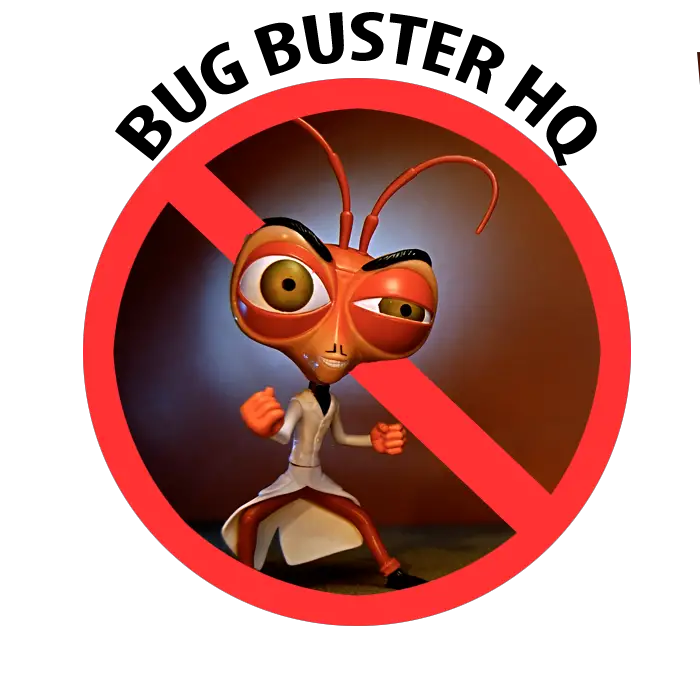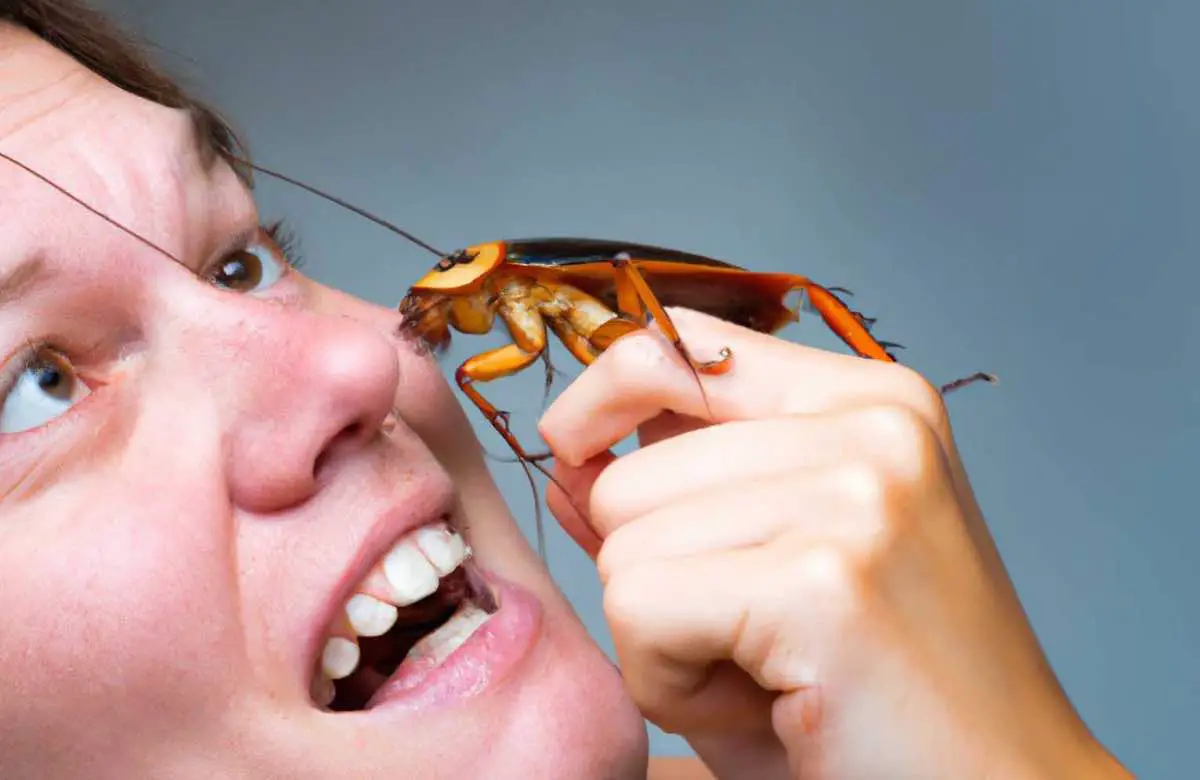This post may contain affiliate links.
You might be curious about the abilities of cockroaches, and whether they can swim or not. These creatures are known for their resilience and adaptability, so it wouldn’t be surprising if they possess some aquatic capabilities. We’ll explore the swimming abilities of cockroaches and provide some interesting facts about these often unwanted houseguests.
So, can cockroaches swim? The answer is yes, but their method of swimming might not be what you’d expect. Some species of cockroaches actually float through water rather than swimming in its conventional sense. These insects are capable of holding their breath for a considerable amount of time, allowing them to survive being submerged in water.
Now that you know cockroaches can indeed swim, or more precisely, float, it’s helpful to understand their limits. For example, although they can remain submerged for extended periods, they cannot swim very fast or far compared to other aquatic insects. Understanding their abilities can help you better manage these unwelcome pests in and around your home.
Cockroach’s Ability to Swim
Breathing Underwater
You might be surprised to learn that cockroaches have the ability to hold their breath for a while. They don’t have gills like fish, but instead, they possess a special respiratory system called spiracles. Spiracles are small openings on the sides of their body that allow oxygen to enter and carbon dioxide to exit. When submerged, they can close these spiracles to prevent water from entering, allowing them to survive underwater for short periods.
Movement in Water
When it comes to their movement in water, cockroaches don’t technically swim – they float and paddle using their legs. They are not as efficient as other insects like water striders, and they aren’t particularly fast swimmers. The distance a cockroach can typically cover while swimming is around 100 meters. While some species like the Oriental cockroach are more attracted to water, their underwater navigation is usually incidental.
So, while you won’t find cockroaches participating in any swimming races, it’s helpful to know that they do have some skills in the water. Keep in mind that their ability to hold their breath and float enables them to survive in damp environments and escape from certain threats. Nevertheless, they can still drown after about 30 minutes in water. Remember, baby cockroaches also possess these capabilities, making them just as resilient as their adult counterparts.
Which Types of Household Cockroaches Can Swim?
Of the many cockroach species found around the world, there are four main types that commonly infest households: the Oriental cockroach, the American cockroach, the German cockroach, and the Brown-banded cockroach. Each of these species has its own characteristics and abilities, so let’s dive in and find out which ones can swim.
First, we have the Oriental cockroach. While not particularly fast swimmers, these cockroaches can survive underwater for about 30 minutes. So if you come across one in a pool or sink, don’t be surprised if it manages to stay afloat for quite some time.
The American cockroach is another species that can swim, or more accurately, float. Since they aren’t strong swimmers, they mostly rely on floating and the water currents to move around in water. However, this ability is still enough for them to occasionally enter structures through drains or toilets.
As for the German cockroach and the Brown-banded cockroach, it seems that their aquatic abilities aren’t great either. Like the other roach species on this list, they can’t swim. However, they can all float and survive the water.
In summary, of the four main household cockroach species, they can swim (or float) to some extent. While you might not regularly find them swimming in your pool, it’s impressive that these resilient insects can utilize their skills to survive in various environments. So, the next time you encounter a cockroach, you’ll have a better grasp of their intriguing swimming abilities.
Cockroaches and Water Source
Cockroaches in Drains
Cockroaches are often found in damp and dark places where they can easily access water sources. Drains, sewers, and pipes are prime locations for them to thrive. Oriental cockroaches, for example, are known to frequent these areas. If you notice cockroaches in your drains or around your sinks, it’s a sign they might be coming from the plumbing system.
Can Cockroaches Swim-up Drain?
You might wonder if cockroaches can swim up drains, and the answer is yes. While they are not natural swimmers like fish, their light bodies and dexterous legs allow them to move across water surfaces. They leverage the water’s surface tension to stay afloat and make their way up drains.
Can Cockroaches Swim Up Toilets?
It’s an unpleasant thought, but cockroaches can indeed swim up toilets. They can hold their breath for up to 40 minutes when submerged in water, giving them ample time to find their way up your toilet pipes. While it’s not a common occurrence, it’s crucial to keep your bathroom clean and take preventive measures, such as keeping the toilet lid closed or caulking your bathroom, to deter cockroaches from reaching your living spaces.
By being aware of their habits and the places they seek water, you can take steps to prevent and manage cockroach infestations. Good sanitation, regular plumbing maintenance, and professional pest control can help protect your home and keep these unwanted visitors at bay.
Can Water Kill Cockroaches?
As you may wonder about cockroaches and their ability to swim, it’s essential to know whether water can kill them or not. So let’s dive into this topic and explore how hot and cold water might affect these resilient insects.
Hot vs Cold Water
Firstly, let’s talk about hot water. Surprisingly, hot water can indeed kill cockroaches, but only if they are fully submerged. It’s important to note that it’s the heat that kills the roach, not the water itself. Roaches cannot survive temperatures over 125 degrees, especially in direct contact.
On the other hand, cold water is less likely to harm cockroaches. They would need to be submerged in water below the freezing point to be affected. However, don’t underestimate their survival skills, as they can hold their breath for up to 30 minutes underwater and 40 minutes above water, making drowning quite rare.
So, while water alone might not be the most effective way to kill cockroaches, their resilience to temperature and ability to hold their breath still makes them impressive survivors. As a result, it’s crucial to explore other methods for effectively controlling these pests in your home.
What Type of Water Kills Cockroaches?
Cockroaches are notoriously resilient pests, but you may be wondering if water can put an end to them. The answer is a bit more complex than a simple yes or no.
First, let’s discuss drowning. Cockroaches have a unique respiratory system that allows them to hold their breath for extended periods of time. This means that merely submerging them in water isn’t enough, and the duration of submersion plays a vital role in their survival.
However, it’s important to note that hot water can be effective in killing cockroaches. When faced with hot water, roaches will likely be incapacitated and die in the water.
On the other hand, cold or room temperature water isn’t very effective on its own. Roaches cannot swim underwater but they possess strong climbing skills and can usually find a way to escape from it, given the chance.
While using water to kill cockroaches might not always be the best solution, there are other methods you can try. For example, you can use roach bait, traps, and pesticides like boric acid to effectively eliminate these pests from your home.
Remember, each situation is unique, and the effectiveness of water in killing cockroaches largely depends on the temperature, duration of submersion, and the physical condition of the roach. So, while hot water may work in some cases, consider exploring other avenues to ensure a roach-free environment.
How to Drown Roaches Correctly?
If you’re trying to eliminate pesky cockroaches from your home or business we highly recommend you get rid of roaches the way exterminators do. But you also might be wondering if it’s possible to drown them. Well, although cockroaches are indeed resilient insects and can survive for a while underwater, they will eventually drown if they remain immersed in water long enough. So here’s a guide for you to drown roaches correctly.
Firstly, to drown a roach effectively, make sure that its entire body is submerged in water. Cockroaches aren’t heavy enough to sink in water, so holding them underwater for at least one hour is essential. You can do this by filling a container with water and carefully placing the roach inside, pushing it down with a utensil if necessary.
In cases where you spot roaches near your sinks or even in your bathtub, it’s crucial to understand that merely flushing them down the drain is not an effective method to kill them. As mentioned earlier, they need to be completely submerged for at least an hour to drown successfully.
Keep in mind that while drowning roaches may kill the individual insect, it may not be the most efficient method to control a larger infestation. It can be time-consuming, especially given that each roach must be submerged for a prolonged period. Moreover, cockroaches are known to reproduce rapidly, so while you might be busy drowning one roach, there may be many others hiding in the shadows.
For larger infestations or situations where drowning is impractical, you might want to consider alternative pest control methods such as baits, traps, or even calling a professional exterminator to ensure that the infestation is effectively dealt with and that your space remains roach-free.
Just remember, cockroaches are resilient creatures, but with perseverance and the proper techniques, you can successfully eliminate them from your home or business. Happy roach hunting!
Do Cockroaches Like Water or Hate It?
When it comes to water, you might wonder whether cockroaches are fans or foes. In general, these pesky insects need water to survive, but they don’t necessarily like it. They can go for several weeks without it, but they prefer to stay in moist, humid environments.
As for their relationship with water, cockroaches tend to be attracted to water sources. However, they are more likely to drink from a still, standing water source rather than running water. Keep in mind that roaches need a regular source of water to survive, particularly the American cockroach.
However, despite their affinity for water, cockroaches can’t survive for long when fully submerged. They struggle to find fresh air and close their spiracles, trying to come to the surface for air. Roaches don’t possess particular organs or gills for breathing underwater.
To sum it up, cockroaches don’t necessarily love or hate water. They require it to live, and they’re attracted to damp environments. While they can float and may access structures through water, they don’t possess the ability to survive underwater for extended periods.
Reasons Cockroaches Like Water
Cockroaches are known for their incredible survival skills, and one of the factors contributing to their resilience is their relationship with water. Although you might not expect it, these pests appreciate water for several reasons.
First off, hydration is crucial for cockroaches. Like many living organisms, they rely on water to maintain their bodily functions. In fact, some species of cockroaches can survive without food for weeks, but they’ll perish within days if they don’t have access to moisture. That’s why you’ll often find them lurking around sinks, drains, and other damp areas in your home.
Another reason they’re attracted to water is for breathing. While they don’t have lungs like humans, cockroaches do possess small air tubes called spiracles that help them stay underwater for longer periods. By closing these spiracles, roaches can regulate water loss and prevent the expulsion of water vapor in their bodies, allowing them to hold their breath for up to 40 minutes.
Cockroaches are also known for having some swimming abilities. Although they don’t necessarily swim like fish, they are able to float through water, which helps them navigate through flooded environments or escape potential threats.
In addition, the presence of water creates a habitat suitable for these pests to thrive in. Cockroaches prefer moist, dark spaces, which is why they’re commonly found in and around water sources like pipes, drains, and leaky faucets. The humidity in these environments provides the dampness they need to survive and reproduce.
Lastly, water can be a source of food for cockroaches. They’re known for being scavengers and opportunistic feeders, which means that if there’s any organic matter – such as bits of food or dead insects – floating in or around the water, these pests will be attracted to it as a potential meal.
Water plays a major role in the survival and behavior of cockroaches. From hydration to habitat, these pests rely on water to maintain their creepy-crawly existence. Keeping your living spaces clean and dry can help deter them from setting up shop in your home.
Do Cockroaches Lay Eggs Underwater?
No, it turns out that cockroaches don’t lay their eggs underwater. These critters prefer a different environment when it comes to their reproduction process. Cockroaches typically lay their eggs in warm and humid places, so they’ll hunt for somewhere safe and cozy to deposit their oothecae (egg cases) on land.
While cockroaches have a remarkable ability to survive being submerged in water for up to about 40 minutes, they certainly don’t live or breed underwater. These pesky insects are primarily terrestrial creatures. So, if you happen to spot a cockroach scuttling across your kitchen floor, rest assured it didn’t come from an underwater nest.
Even though cockroaches don’t lay eggs underwater, they do have a pretty impressive reproductive system. A female cockroach can lay multiple batches of eggs a year and produce hundreds, even thousands of offspring annually.
Cockroaches primarily live on land and don’t lay their eggs underwater. Their main focus is to find a warm, humid environment to lay their eggs, ensuring the next generation of these resilient pests.
What are Water Roaches?
You may have heard the term “water roaches” and wondered what exactly distinguishes them from regular cockroaches. Water roaches is a nickname. It can also be known as Palmetto bugs, are a type of cockroach that prefers to live in moist environments, often near water sources. Water roaches are not the same thing as water bugs. These roaches share many similarities with other cockroach species but have some unique adaptations that help them thrive in watery habitats.
Firstly, water roaches have developed the remarkable ability to hold their breath for up to 40 minutes. This adaptation enables them to survive longer in water than many other insects. While they might not be expert swimmers, their long legs can help them paddle frantically when they find themselves submerged.
Moreover, their spiracles, which they use for breathing, can stay closed while in water, allowing them to float and acquire oxygen from the surface. This also helps them to avoid drowning in watery situations.
Water roaches, like other cockroach species, are resilient insects that can survive and even thrive in challenging conditions. They can be found around the globe, particularly in moist and humid environments such as the subtropics.
So, even though water roaches might not be winning any swimming competitions, their unique adaptations make them well-suited to living near water sources. And if you happen to encounter one in your home or garden, it might be an indication of a water source nearby that you’ll want to address to prevent any further infestations.
Can Baby Roaches Swim?
Baby roaches, known as nymphs, have similar abilities to adult roaches when it comes to floating on water. While they don’t necessarily swim in the traditional sense, they can stay afloat by holding their breath and using their legs to remain on the water’s surface. This survival tactic allows them to escape certain situations, such as flooded areas.
In fact, these little pests are capable of holding their breath for an impressive 30 minutes underwater. This skill enables them to survive submersion, making drowning a rare occurrence for them.
Now you know, baby roaches can indeed “swim” or, more accurately, float and survive in water like their adult counterparts. You might not be a fan of these little critters, but you have to admit, their survival skills are quite impressive.
Can Cockroaches Survive Being Flushed Down the Toilet?
You might be wondering if flushing a cockroach down the toilet is an effective way to get rid of these pesky insects. It seems like a quick and easy solution, right? Well, not exactly. Believe it or not, cockroaches can survive being flushed down the toilet.
These little critters are quite resilient. They have the ability to hold their breath for up to 40 minutes, which allows them to survive the trip through the pipe and into your sewer alive. Their hydrophobic waxy cuticle also keeps them from actually getting wet, and they can swim if they need to.
If a cockroach falls into the water at the base of the toilet bowl, they will not drown, but they can’t intentionally dive in the water. The toilet system is designed in a way that these pests will have to swim underwater before ending up in the bowl. This means that if you do attempt to flush a cockroach down, they may get stuck in the plumbing rather than returning to your home.
So, while flushing a roach down the toilet might be effective, it’s not a fool-proof solution. In some cases, they can still survive the ordeal and potentially make their way back into your home. Therefore, it’s essential to consider alternative approaches to control and eradicate cockroach infestations.
Can American Cockroaches Swim?
You might be wondering if American cockroaches can swim or at least survive in water. Well, it turns out that some species of cockroaches, including American cockroaches, have the ability to “swim” or rather “float” on water surfaces.
When you see an American cockroach in water, keep in mind that they aren’t technically swimming like fish or other aquatic creatures. Instead, they float and use their legs to paddle themselves along the water’s surface2. This skill of theirs can help them escape danger or look for food.
Let’s not forget that American cockroaches, like other roach species, depend on water for survival3. They usually choose humid areas for shelter, breeding, and living. So, it’s not surprising that they’ve somewhat adapted to water environments.
But remember, these cockroaches won’t be winning any swim races anytime soon. They mainly rely on their floating abilities to survive on the water surface4. So, while it’s fascinating that American cockroaches can “swim” in a sense, their technique is rather unconventional compared to other creatures.
Can Brown-Banded Cockroach Swim?
Brown-banded cockroaches are a species of small roach with distinctive brown bands across their abdomen. They don’t quite have the same aquatic abilities as some other roach species, so their swimming skills are limited.
In general, some species of cockroaches can “swim” or “float” but not in a conventional sense or the way you might expect. They don’t have the ability to control their movements like a water bug would. However, certain roach species can move toward the surface of water in order to avoid drowning.
As for the brown-banded cockroach specifically, they can still float in the water, but it’s safe to say that you’re unlikely to find them doing laps in your pool.
Can German Cockroaches Swim?
So, you’re curious about whether German cockroaches can swim? Well, let’s dive into the topic! German cockroaches are unique creatures that can be found in various parts of the world. While you might think these little intruders can’t do much, they’re actually quite resilient and adaptable.
When it comes to their swimming abilities, German cockroaches can indeed “float” or “swim,” but not in the way you might expect. Some species of cockroaches move toward the surface of the water to avoid drowning. However, they don’t have the ability to direct their movements in water like water bugs can. It’s more of a survival mechanism than a real swimming skill.
Cockroaches are pretty resourceful in finding ways to move through wet areas or escape potential threats. For instance, when they find themselves submerged in water, they can survive in water for some time by floating. Nevertheless, you shouldn’t be too worried about them evacuating en masse through toilet drains, as it’s not a common occurrence.
Overall, German cockroaches might not be winning any swimming competitions, but their ability to navigate various environments and survive in water should have you giving them a little more credit. Next time you think about these pesky insects, just remember that they’re more capable than you might have initially assumed.
Can Hissing Cockroaches Swim?
First off, it’s important to note that cockroaches, in general, are pretty resilient creatures. They have been around for millions of years and can survive in a variety of environments. While they might not be the best swimmers, they certainly have some tricks up their sleeves when it comes to water.
Though hissing cockroaches are not known to be strong swimmers, they do possess the ability to hold their breath for a surprisingly long time. In fact, cockroaches can hold their breath for up to 40 minutes underwater by shutting their spiracles (the openings through which air enters their body). This helps them avoid drowning and allows them to float on the water’s surface.
As for their name, the hissing sound these cockroaches make is generated through an interesting biological mechanism. Hissing cockroaches, like their Madagascar counterparts, produce the sound by forcing air through their spiracles. This hissing can be both a mating call and an alarm mechanism.
So, while hissing cockroaches may not be Olympic-level swimmers, they still have their unique ways of dealing with water. As a homeowner or an enthusiast, it’s fascinating to learn about their ability to survive in various situations. So next time you see a hissing cockroach, remember that while they might not be able to backstroke across a pool, they still have some impressive watery survival skills.
Remember, though, if cockroaches ever become a pest problem in your home, it’s best to eliminate them.
Can Oriental Cockroaches Swim?
Oriental cockroaches, just like any other cockroach species, are known for their survival skills. But when it comes to swimming, they cannot actually swim as you might imagine. Instead, they can float on water. This is because they have spiracles, which are small slots all over their bodies that help them breathe.
These spiracles enable cockroaches to hold their breath for an impressive amount of time, allowing them to stay submerged in water for nearly 40 minutes without drowning. Although it’s not common for them to swim in the traditional sense, floating on water helps them survive in various environments.
Fun fact: Cockroaches can access structures through drains, and this is where their ability to float comes in handy. While it’s not a frequent occurrence, it’s important to be aware that it does happen. So, if you ever find a cockroach in your sink or bathtub, it might have floated up through the drain.
To recap, although Oriental cockroaches can’t technically swim, they possess a unique ability to float on water and hold their breath, which allows them to navigate and survive in different situations. So, the next time you encounter one of these creatures, keep in mind their remarkable resilience and adaptability.
Can Baby Cockroaches Swim?
Baby cockroaches are known for their resilience and adaptability, much like their adult counterparts, possess certain evolutionary abilities that make them extremely hardy. In fact, they can survive in water for up to thirty minutes. So, does that mean they can swim?
Technically, the term “swim” might not be the best way to describe their behavior in water. Instead, some species of roaches can “float” or “swim” to a certain extent, but not in the same way other aquatic creatures do. They’re lightweight and have the ability to close their respiratory organs when submerged, which helps them survive longer in water.
However, their movements in water are not as controlled as, say, a water bug’s. They might move towards the surface to avoid drowning, but their skills are limited in comparison to true aquatic insects.
So, while baby cockroaches aren’t exactly Michael Phelps of the insect world, their resilience and adaptability do give them an edge when it comes to surviving in water. Keep in mind, though, these abilities may vary with different species or unique situations, but overall, baby roaches can be surprisingly equipped to handle watery environments. Just another reason why these little buggers are incredibly hard to get rid of!
Frequently Asked Questions
Can roaches breathe underwater?
No, roaches cannot breathe underwater. However, they have a unique ability to close their spiracles, which are the tiny holes they use for breathing. This allows them to endure brief periods in water without drowning.
How long can roaches hold their breath underwater?
Cockroaches can survive being submerged in water for up to 40 minutes, depending on the species. Closing their spiracles helps them retain oxygen while preventing water from entering their respiratory system.
Do swimming pools attract roaches?
Swimming pools can attract roaches, mainly if the surrounding area has food or debris, which they seek. Additionally, roaches are typically drawn to moist environments, so an unkempt pool area could potentially attract them. Keep your pool area clean and free of food scraps to minimize the chances of roaches showing up.
Can a cockroach survive in water?
Although cockroaches aren’t natural swimmers, they can still survive in water for a short period. Thanks to their light bodies and dexterous legs, they are able to scuttle across water surfaces, utilizing the surface tension to stay afloat. However, prolonged exposure to water may lead to drowning.
Do roaches drown in hot water?
Roaches might not drown immediately in hot water, but the heat can eventually kill them. Intense heat can damage their exoskeleton and compromise their overall ability to survive. So, while they may not drown quickly in hot water, it is still an effective method for exterminating these pests.










